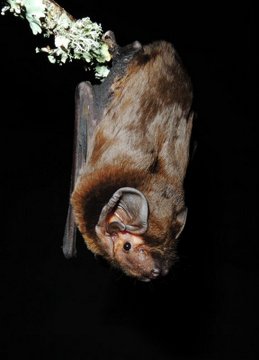
A Chinese noctule was found in August, 2012 at the Guanwu Region in Shei-pa National Park.The bat was discovered in a harp trap set up in the Guanwu Salamander Habitat, which is primarily for conserving the endangered Guanwu Salamander but also for studying wild bats.
“Mid-altitude Guanwu has many cloud forests, sources of water and diversified plantation. As a result, a variety of animal species have been found here, including wild bats,” Lin Chin, head of the Shei-pa National Park Administration Office, said.Chinese noctules are medium to large in size and live on warms. They are featured by longish brown hair smooth as silk, as well as pine mushroom-shaped earlobes.
The winged animals have been found in human households, forests and cities in general. It seems they live in low to mid altitude areas in Taiwan proper and the Jinmen region. But their exact habitats and ecology remain relatively unknown. Since they are spotted very often, they are likely to be a rare species.
According to the Shei-pa National Park Administration Office data, in the last four months 470 bats were caught, which is truly amazing. Of those captured, only 15 carry small rings on their wings placed by researchers as they were previously caught. That is, recapture rate is only 3%. This shows bat population in Guanwu is rather large. All captured bats are set free once they are sized and photographed. They are tagged with rings before returning to the nature, so that in the future researchers can recognize them.

In fact, researchers also found another bat species, Taiwan mouse-eared bat, in the region. This adds up bat species at Guanwu to 24 over the last five years, which is 75% of its total (32) throughout Taiwan proper.
“Studies on bats will continue at Guanwu. It is expected more bat species will be discovered in the near future, and that more research results will be achieved,” said officer Lin.